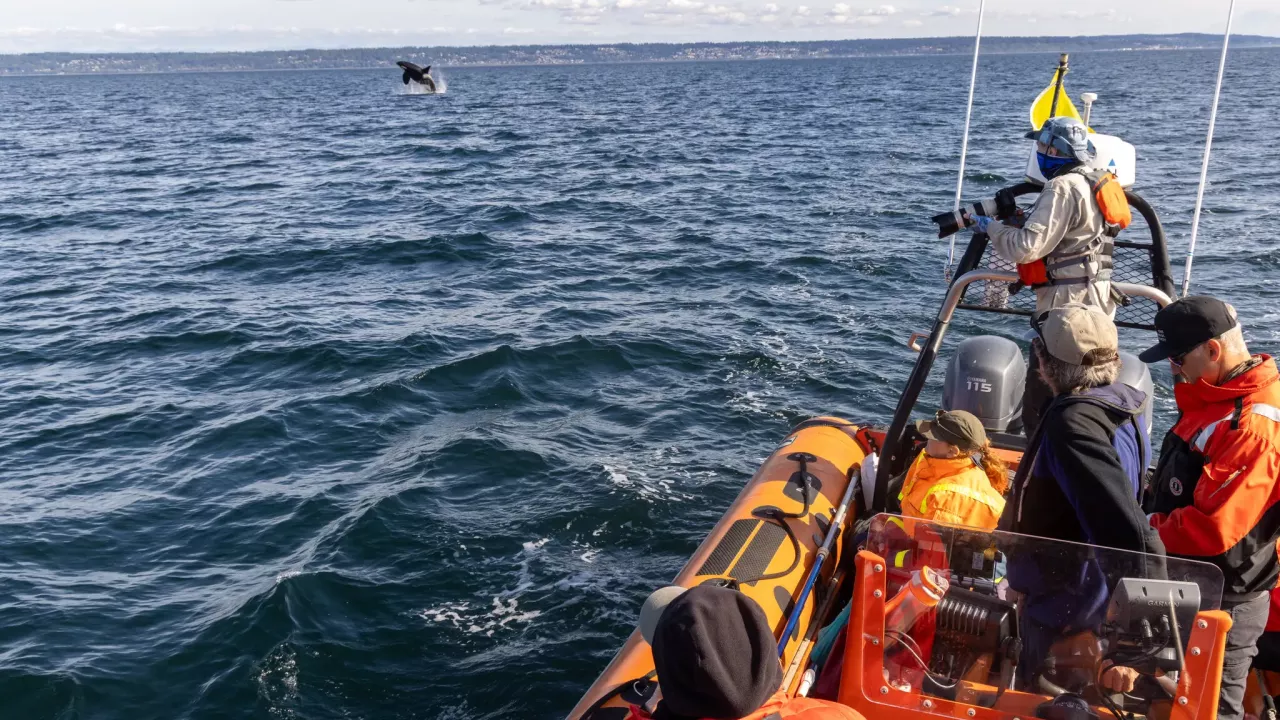
House Calls for Killer Whales
One day last September, a team of scientists clambered onto a small boat and set out into the Salish Sea, searching for an endangered population of orcas. The Southern Resident killer whales, one of several distinct orca communities that inhabit the Pacific Northwest, can be elusive, so the researchers were delighted to find a small pod of them. But as they drew closer, a putrid smell washed over the boat.
The scientists eyed each other with suspicion before it dawned on them: The odor was coming from the clouds of mist that the whales were expelling from their blowholes. “Everybody is allowed to have bad breath every now and then, but this was not just bad breath,” said Dr. Hendrik Nollens, the vice president of wildlife health for the San Diego Zoo Wildlife Alliance, who was on the boat. “There was something going on.”
Fetid breath can be a sign of illness or infection, but the cause could have been anything from a tooth abscess to a life-threatening case of pneumonia. Fortunately, the scientists were armed with an experimental diagnostic tool: a breath-collection drone. The technology — essentially a flying petri dish that could be steered into an orca’s plume — was still under development, but it was about to face an unexpected, real-world test. “We were concerned,” Dr. Nollens said, “and so we launched our drone.”
It’s not easy to perform a veterinary exam on a wild, multi-ton marine mammal that might surface for only seconds at a time. But for the last five years, a team of veterinarians, marine biologists and engineers has been developing tools to do just that. Their goal is to perform regular, remote health assessments on each of the Southern Residents — and, if necessary, to intervene with personalized medical care.
It’s an unconventional approach to conservation, which typically aims to shore up the health of populations rather than individual animals. But the Southern Residents, which were listed as endangered in 2005, are in serious trouble, threatened by pollution, boat traffic and plummeting stocks of wild salmon, their preferred food source. Despite ongoing conservation efforts, the population is about 75 whales.
“We’re in a dire, dire situation,” said Dr. Joe Gaydos, the science director of the SeaDoc Society, a marine conservation program at the University of California, Davis, School of Veterinary Medicine. “We’re at that point where the health of every single individual is important.”
